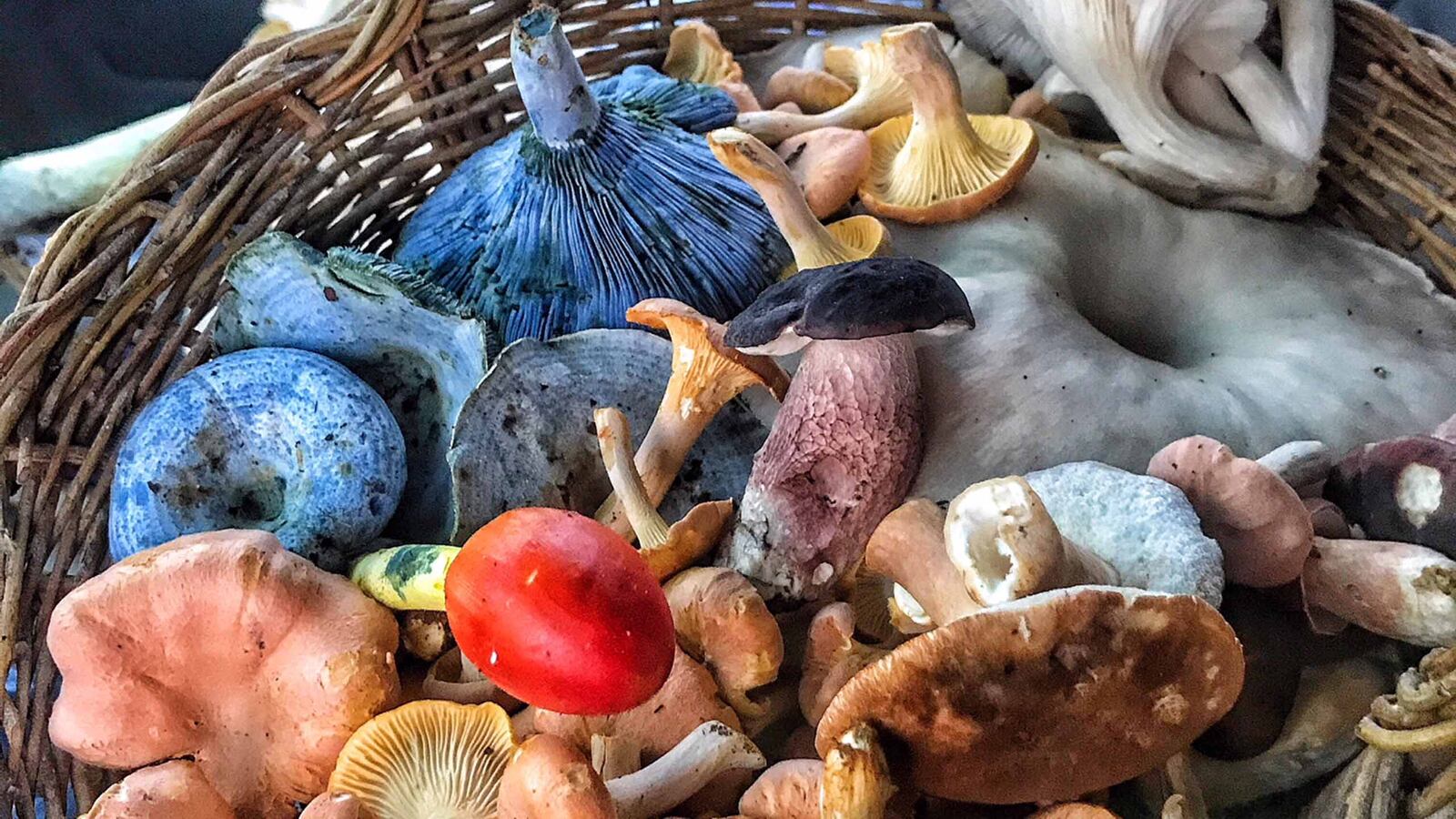I met my prospective mushroom guru, Eugene Hudders, for a late lunch at The Horseshoe restaurant in South Hill, Virginia, where he is the head cook.
The room is decorated in mostly white and green, and we got a booth in the back corner among the old photos, tin signs, and what must be the results of someone’s frequent thrift-store shopping. The Horseshoe has been a roadside diner since 1937, when Route 1, which runs right outside, was one of the busiest highways in the country.
Hudders and chef Austin Bradley deliver homey fare that you might expect, including fat burgers, pimento cheese, homemade onion rings, and gravy. The pies are the stuff of local legend and the sweet tea never stops coming. The Horseshoe operates at a level of sincerity and quality that can be hard to find on the shoulders of our byways or fine dining rooms for that matter.
One would not expect, however, for it to be out on the forefront of cuisine. Except, Hudders is starting a business called Foraged Kingdom, and creating a network of local mushroom hunters to harvest wild oyster mushrooms, lion’s manes, and hen of the woods from the area. All of these shrooms, as well as the organic and biodynamic ones he’s growing on his farm, will be served at The Horseshoe and other Virginia restaurants, including the Broken Tulip in Richmond.

“Chicken of the Woods,” said Hudders, eyes agleam, “is going to be popular. Really popular. It’s better than chicken.”
He glanced down at the crab dip in which I was dredging a slice of toasted baguette, flashed his big, quick smile and said: “Pom pom mushrooms in place of crab! I could make crab cakes out of pom pom mushrooms, and you’d never even know.”
His fascination with mushrooms all started with a generous friend and a morel. Hudders had never tasted one—and frankly didn’t want to, given how weird it looked and his aversion to button mushrooms. Coerced by his buddy, he took a bite. In the telling, his eyes gleam with excitement remembering that first delicious taste. He loved it. He asked for more and was promptly schooled on how rare and expensive such treats are—go get your own, in other words.
He did.
Hudders has spent the last eight or so years of his life cramming as much fungus knowledge as he possibly can into his brain. He spent a year learning the Latin names (he tells me that one must learn the Latin nomenclature to avoid the confusion of regional names and nicknames), a year studying just the poisonous varieties, a year on edible ones, and so on.
He is happiest when foraging in the woods, and chuckles as he tells his stories about trying to sneak in a little walk before work, only to end up arriving an hour late.
I’ve met with Hudders for several reasons. Most importantly, I’ve always been interested in mushrooms. My neighbor when I was a child was one of America’s first shiitake growers and watching his mushrooms sprout on logs in a little culvert where he stashed them was fascinating.
I’m not, of course, alone. I have noticed that across the country, people seem increasingly fascinated in propagating mushrooms, and the mushrooms themselves seem more widely available whether on restaurant menus or in grocery stores. (Mushroom hunters even now show up on outdoorsy reality TV shows.)
Sharondale Farm, in Keswick, Virginia, sells a cute starter kit with which you can easily grow your own mushrooms at home. I, naturally, bought one. It’s a beautiful little rig. (No doubt, many are purchased in hopes of getting kids interested in eating something other than string cheese and chicken fingers.) Essentially, it’s a burlap sack wrapped around a plastic bag containing a dense sawdust stump.
In about a week my blue oyster mushrooms budded out and started to grow. Fast. I felt as if they expanded every time I turned my back on them. They were a beautiful steely violet blue. I seared them in a hot pan, and sautéed them quickly in olive oil with a splash of white wine, and then slid them on top of sliced steak. They were delicious. I was hooked.
I want to grow more than just what this small kit produced. To do it right, I needed more advice, which is how I wound up chatting with Hudders in his dining room. I learned that I should look for different spots to grow my mushrooms, wetter for the shiitakes, which like humidity, drier for the oysters. I learned that white oak was better than red oak for growing. Bellwether shiitake will grow in the cold. Hudders told me to walk the creek, looking for big old tulip poplars. Morels grow in the leaf litter around the washouts. In the spring, look for leaves the size of mouse ears, he told me, because that’s when the trees are full of sugar.
What I really wanted to ask was what he thought was happening. Why are mushrooms seemingly growing everywhere I look?
“Ninety percent of plant life has a beneficial symbiotic relationship with mycelium,” said Hudders. Plants, trees, and mushrooms have always grown in partnership and once it’s pointed out to you, it’s hard to not see it.
Convinced that I shared his passion for mushrooms, Hudders invited me to go on a hunt with him in the woods. Spring is just around the corner, and that means morels. I can’t wait.






